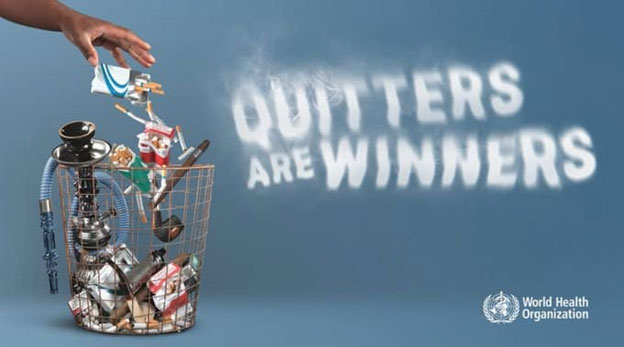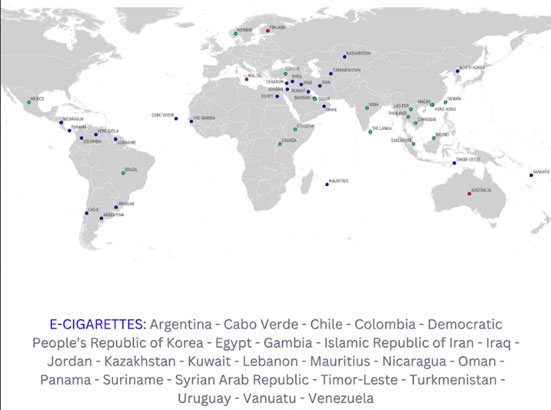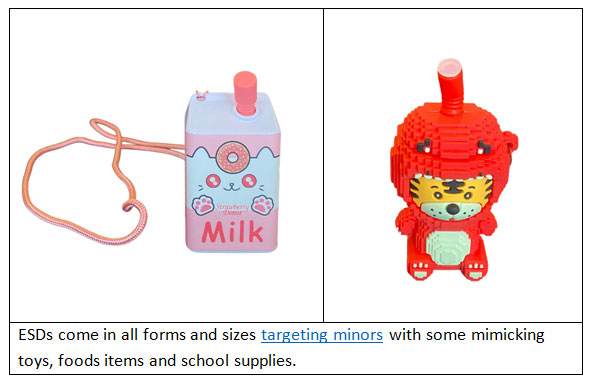Ban or Restrict? Quandary Facing Governments as Vaping Entices Teens Worldwide

BANGKOK, Thailand, Jan 26 (IPS) - A hot debate on electronic smoking devices is expected to engage governments, scheduled to meet in Panama from 5-10 February for the tenth session of the Conference of Parties (COP) to the WHO Framework Convention on Tobacco Control (WHO FCTC).
The WHO FCTC, the first health treaty, was developed to address the global tobacco epidemic and to ensure that governments are supported in implementing comprehensive and effective tobacco control strategies.
Earlier in 2016, the governments during COP8 made a decision to either prohibit or restrict the manufacture, importation, distribution, presentation, sale and use of electronic nicotine delivery systems (e-cigarettes). Since then, more than 45 countries and jurisdictions have banned e-cigarettes as a precautionary principle (Figure 1).

Electronic smoking devices (ESDs), which include e-cigarettes (or vape products) and heated tobacco products (HTPs), has grown into a multi-billion dollar industry estimated to be worth about USD 18 billion in 2022 to about USD 46 billion by 2030.
While the tobacco and vape industries claim these devices are safer than traditional cigarettes and can be used by smokers to quit, no country has approved them as cessation tools. ESDs cannot help smoking cessation as studies show the nicotine in ESDs keeps its users addicted to tobacco products, and most smokers who took up ESDs to quit smoking ended up using both ESDs and traditional cigarettes (dual use).
ESDs are not harmless. Current research indicates that ESD pose health risks, as aerosols from these devices contain nicotine as well as toxic chemicals, volatile organic compounds, and heavy metals that may damage the lung and heart.
WHO warning to act urgently on e-cigarettes
Last month, the WHO issued an urgent call to control e-cigarettes to protect children and the general population. According to WHO’s statement, “E-cigarettes with nicotine are highly addictive and alarming evidence has emerged of adverse population health effects.”
According to WHO, 88 countries have no minimum age at which e-cigarettes can be bought and 74 countries have no regulations for these harmful products.
A number of high-income countries with declining smoking prevalence but who legalized e-cigarettes are now grappling with increasing youth vaping, such as Canada, New Zealand, U.K. and USA. Low-and-middle-income countries who are already struggling to overcome the burden of the tobacco epidemic now face a double burden with nicotine addiction.
But despite the growing evidence that ESDs are dangerous and highly addictive, the tobacco and nicotine industry aggressively market these devices, particularly to youth.
The industry and its lobbyists pressure governments to approve sales of these new products with routine arguments about loss of taxes and smuggling, while simultaneously exaggerating their virtues.
Youth targeted in new nicotine products
The ASEAN region's 213 million youths are an easy target for the tobacco industry which employs a host of marketing tactics to lure these young people. In 2019, about 14% of Filipino adolescents aged 13 to 15 years reported using ESDs, alongside nearly 15% (2022) of Malaysian and 11% (2018) of Indonesian teens.
ESDs come with a variety of flavors, most of which are made to attract young people, such as fruity, candy-based, and dessert-like flavors. Over 16,000 e-liquid flavors are sold in the market currently, and there is clear evidence these flavors harm the body.
Food flavors are meant to be used in foodstuff to be digested, not inhaled into the lungs which harms the respiratory system. This harm is seen in cases where young vapers have suffered collapsed lungs and have been admitted to intensive care.

Promoted as cool, lifestyle must-haves, the tobacco industry also entices the youth to use ESDs through social media platforms such as Instagram and Facebook, and through sponsorships of events and concerts.
To ban or restrict electronic smoking devices
In the ASEAN region Singapore imposed a ban on these devices in 2011 to prevent unchecked use of ESDs. They also consider ESDs as starter products which may cause nicotine addiction and lead consumers to use both ESDs and cigarettes later in life.
Hong Kong, like Singapore, banned ESDs in 2022 as a response to the growing youth uptake for these products. Other countries who have banned ESD in the ASEAN include Thailand, Laos and Brunei. Indonesia, Malaysia and the Philippines legalized e-cigarettes and face a big youth vaping problem.
Australia adopted a prescription only approach to e-cigarettes, while HTPs are banned. The United States, through its Food and Drug Administration regulates ESDs on the basis of age restrictions, health warning labels, ingredients disclosure, and marketing restrictions.
Some governments have implemented stringent regulations on the basis of price or tax measures, product standards control, health warning labels and restrictions on marketing and advertisements. Policies however should also cover age restrictions, flavor bans, and smoke-free regulations.
Eight million deaths due to tobacco are eight million deaths too many. With ESDs, history cannot repeat itself. At COP10, governments will be presented with a once-in-a-generation opportunity to ensure that the tobacco industry cannot deceive anymore. Governments must perform their mandate to protect the people’s right to good health and well-being and to work towards a healthy, tobacco-free world.
Dr Ulysses Dorotheo is the executive director of the Southeast Asia Tobacco Control Alliance. He is also a member of the World Health Organization's Civil Society Working Group on Non-Communicable Diseases and the World Heart Federation Tobacco Experts Group.
IPS UN Bureau
Follow @IPSNewsUNBureau
Follow IPS News UN Bureau on Instagram
© Inter Press Service (2024) — All Rights Reserved. Original source: Inter Press Service
 Global Issues
Global Issues